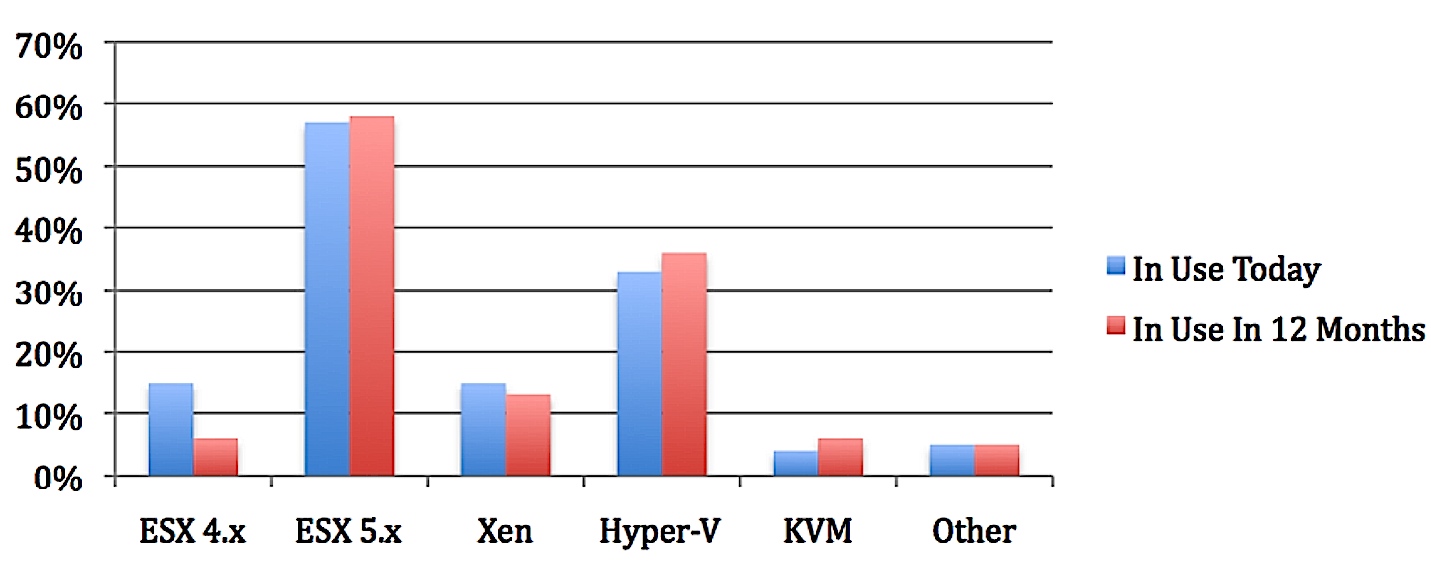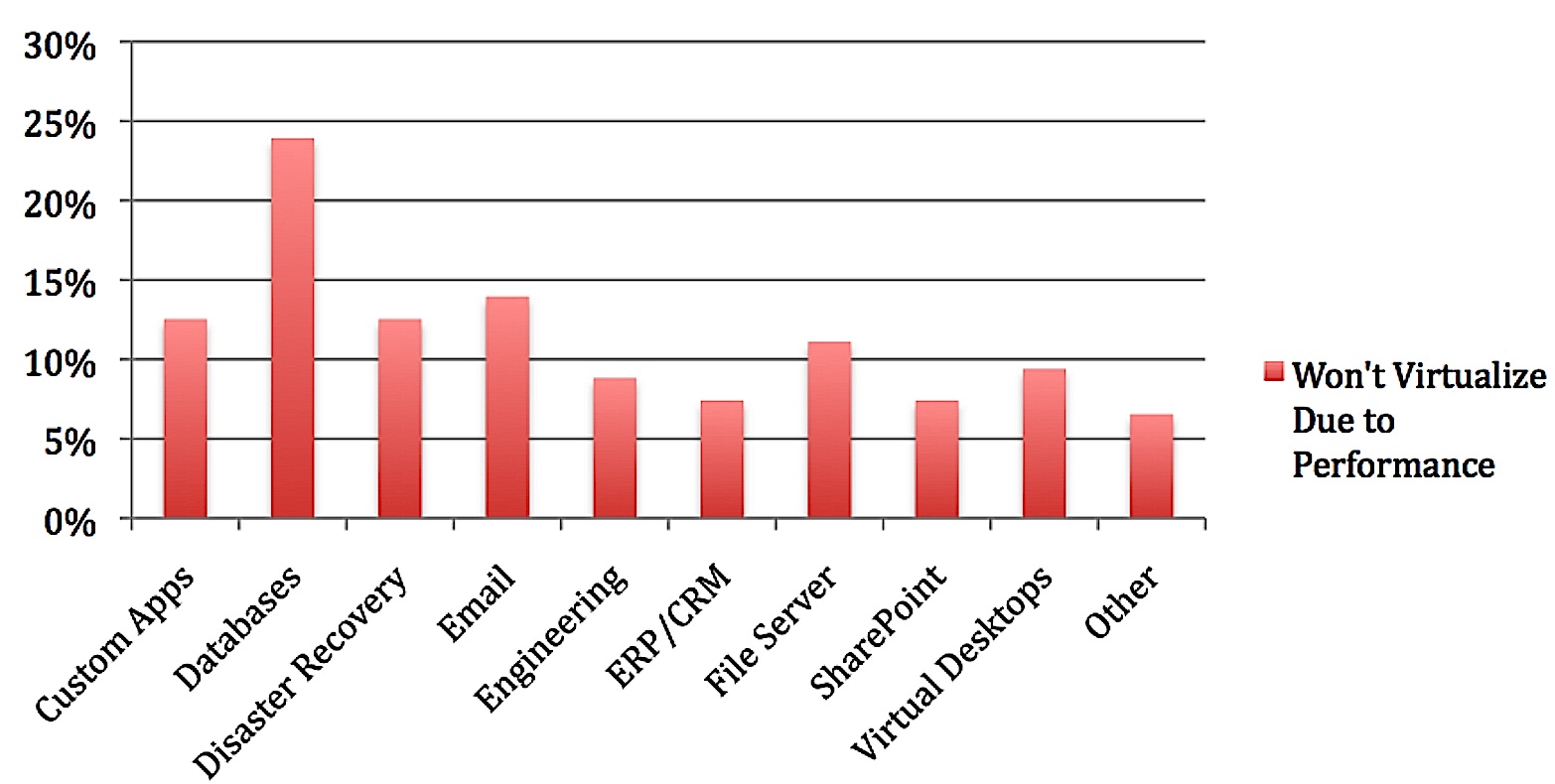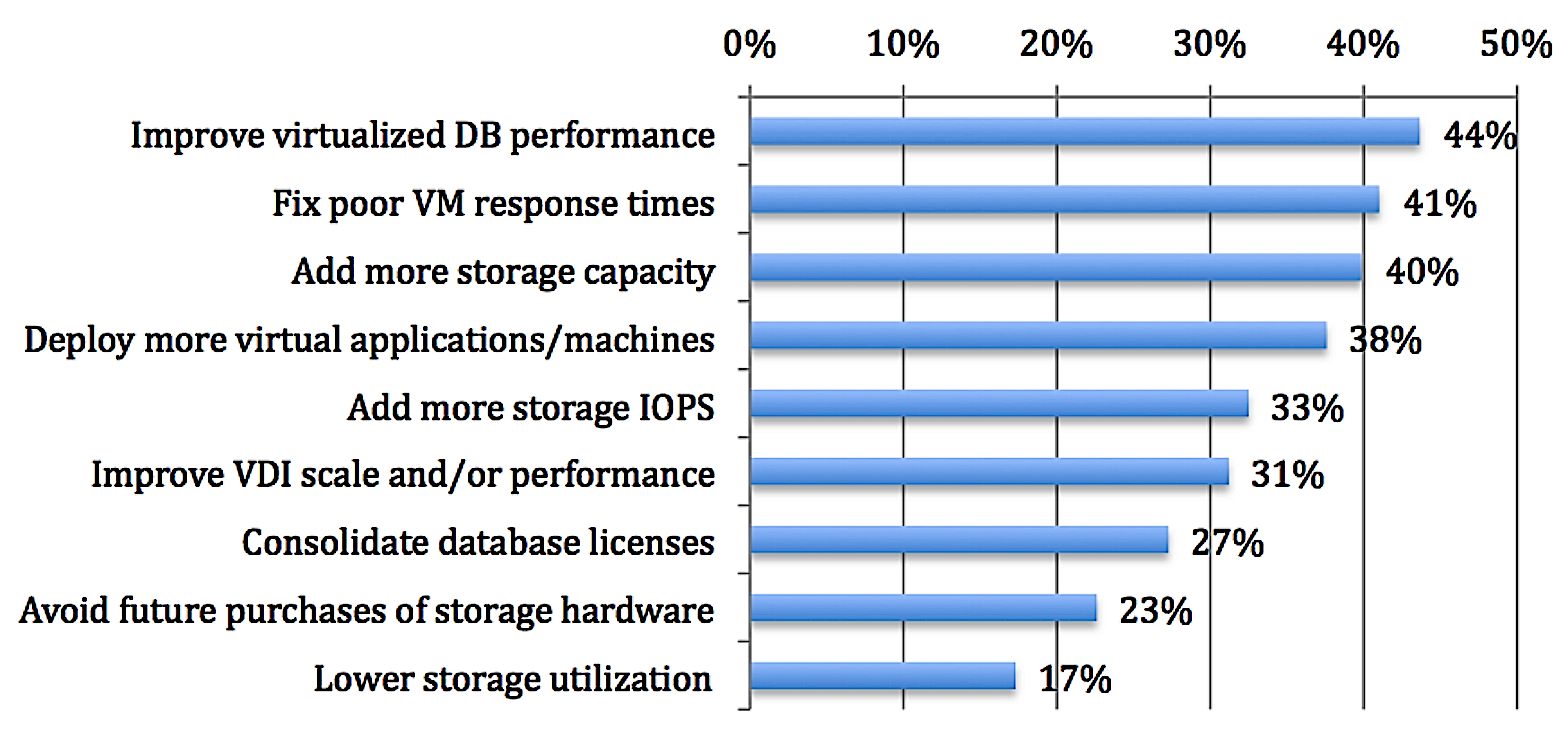2014 Virtualization and Storage Report Survey – PernixData/VirtualizationReview.com
How to increase I/O performance of traditional storage in virtualized environments?
This is a Press Release edited by StorageNewsletter.com on December 15, 2014 at 3:19 pmVirtualization has empowered applications to run anytime, anywhere with increased flexibility and fault tolerance. But when it comes to performance, one problem still remains: storage.
The I/O performance of traditional storage is a common bottleneck in virtualized environments, causing delays in application response times.
Both hardware and software solutions exist to attempt to address storage performance issues in virtualized data centers.
There are various options out there, so survey queried 352 IT professionals to see which are most appealing to them, and which are having the biggest impact on their IT needs. At the same time, it got a feel for how organizations today are using virtualization, and what the expectations are for the coming months and years.
Respondent Demographics
The storage survey, 2014 Virtulization and Storage Report, was conducted by VirtualizationReview.com for PernixData, Inc. over a period of two weeks. The 352 survey respondents represent businesses, government agencies, educational institutions and service providers in the U.S. ranging in size from small businesses to large enterprises, as shown in figure 1. The storage survey was conducted over a period of two weeks. Over 96% of the respondents had technology-related titles, including engineers, developers, directors and C-level positions.
Figure 1: Organization Sizes Represented
When asked about the virtualization platform utilized today and planned for in 12 months, VMware ESX is the clear leader, with over 70% of respondents having it in place today. The biggest growth in the coming months will be in Hyper-V and KVM, as shown in figure 2.
Figure 2: Virtualization Platforms Used Today
Virtualization Usage
Figure 3 shows the percentage of organizations using virtualization by application. It is encouraging to see that virtualization is spread across various business operations, from mission critical applications like databases and DR, to more day-to-day applications desktops and email.
Figure 3: Apps Virtualized Today
However, figure 4 shows an interesting flip-side to this equation. The move from physical to virtual infrastructure often results in storage bottlenecks, which cause a significant drop in performance. Many applications, database being the primary example, remain not virtualized due to this trepidation about performance. Because I/O intensive workloads like databases are notoriously sensitive to storage performance, and given that they are frequently mission-critical in nature, this drop in performance is simply a risk not worth taking. So, many companies are still leaving these applications on bare metal systems today, representing a missed opportunity for them to take advantage of the benefits of virtualization.
Figure 4: Apps Not Virtualized Due To Performance
The Problem: Performance
The above trend is further borne out in figure 5, where it was asked the respondents to rank their top IT priorities. The number one issue raised is the improvement of virtualized database performance.
Of interesting note, though, is that four of the top six IT priorities all revolve around improving virtualized application and storage performance. The leading items cited, for example, include improving virtualized database performance, fixing overall VM response times, adding storage IO/s, and improving virtual desktop performance.
Is the Traditional Storage Solution Adequate?
According to industry benchmarks, approximately 70% of VM performance problems can be traced back to storage bottlenecks.
Traditionally, the only way to address this has been to buy storage capacity – i.e. add more disk spindles to your storage device. Not surprisingly, of the respondents in this survey, 48% have either recently upgraded or are planning to upgrade their storage device in the next 12 months.
Flash is generally viewed as a faster alternative to disk (albeit more expensive). To that end, 39% of organizations have either implemented a combination of flash and disk (in the form of a hybrid array) or plan to in the next 12 months. Just under 20% have similar plans with all flashbased storage arrays.
The above metrics show a trend towards adding flash to storage, but they also indicate that many companies are not diving head first into this approach. Why? The biggest challenge with upgrading storage hardware is that it intrinsically links storage performance and capacity, requiring the purchase of one to get the other. This leads to increased storage costs and inefficient usage of available storage resources. As figure 6 shows, this is not typically what companies want or need.
Figure 6: The Need for Storage Capacity and/or Performance
In the survey, the respondents were asked to specifically rate thei storage performance and capacity needs. 30% indicated that they need more storage performance but have sufficient storage capacity. This is the highest response rate for any of the categories. 21% stated that they need storage capacity but not performance, and 21% indicated that they need both storage performance and capacity. This indicates several things. For one, storage performance is often a very separate requirement from capacity and should be handled separately.
Secondly, storage performance is the biggest issue facing companies, with over 51% of respondents requiring an improvement on this front.
New Approach
In an effort to treat storage performance requirements different from capacity requirements, many companies have begun to look at a decoupled storage architecture, where server-side flash is deployed in conjunction with existing shared storage. This puts storage performance in the server tier, closer to the VM and the application, while leaving capacity in the storage array.
In fact, 44% of respondents either have or are planning on implementing server-side flash hardware in the coming years. In addition, 43% of organizations are looking to utilize storage acceleration software in conjunction with high speed server resources like flash and RAM to bring additional performance, reliability and flexibility to this new server tier.
Amazingly, 70% of organizations stated they would buy server virtualization software that lets them add storage performance without buying more storage hardware (figure 7). To that end, the concept of decoupling is extremely attractive, indicating strong upside for this new approach to storage.
Figure 7: Would You Buy Software That Lets You Add Storage Performance
Without Buying More Storage Hardware?
Summary
Organizations today are keenly aware of the benefits of virtualization, embracing it for every part of their enterprise application infrastructure.
They are equally aware of the performance problems that go along with virtualizing critical applications, the majority of which can be traced back to storage bottlenecks.
The traditional approach of upgrading storage with more disk helps, as does adding flash into the storage device. But it doesn’t solve the fundamental problem that storage performance and capacity are different issues that need to be addressed individually.
As a result, there is strong demand for a decoupled storage architecture that leverages high speed server resources, like host-side flash and RAM, in conjunction with existing (or future) shared storage. Furthermore, there is a strong desire to leverage storage acceleration software to bring more control and flexibility to this environment, while keeping hardware costs to a minimum.
Storage is at a crossroads, being driven to an inflection point by the proliferation of virtualized applications. There is clearly a strong appetite for software solutions that alleviate storage performance bottlenecks, enabling existing virtualized environments to become more effective while allowing mission-critical applications like databases to transition to the virtual age.
















 Subscribe to our free daily newsletter
Subscribe to our free daily newsletter

